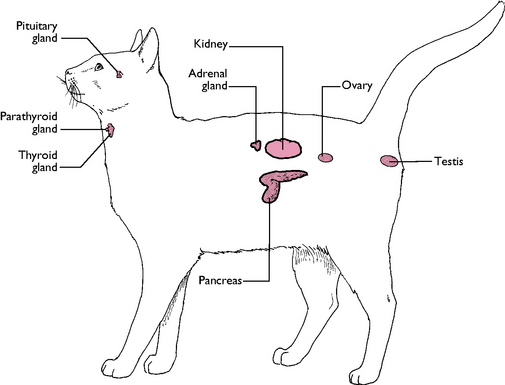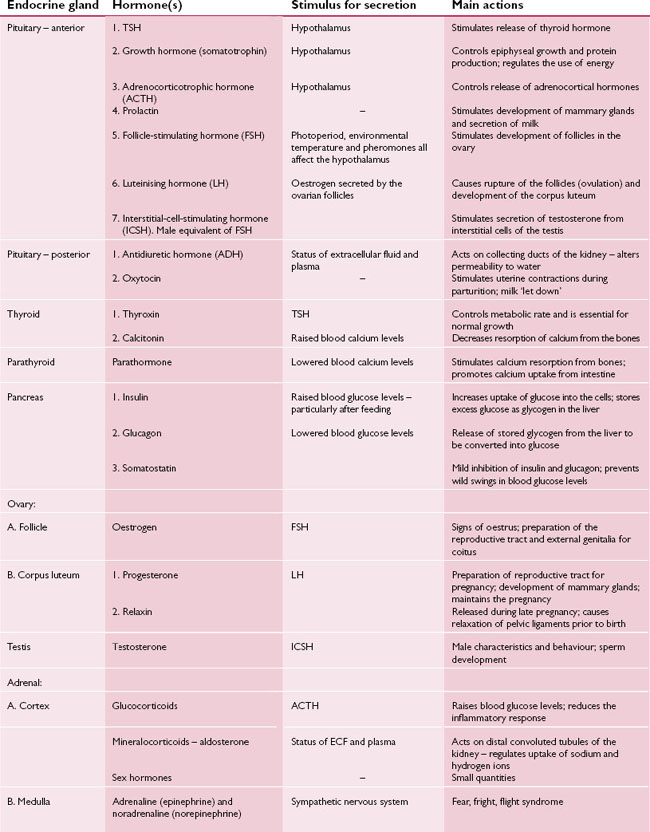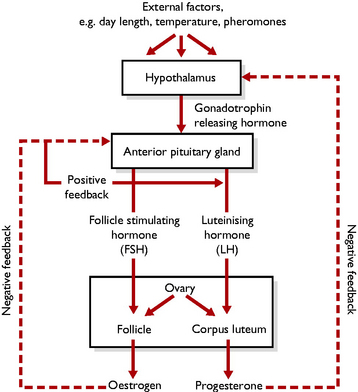Chapter 6 Endocrine system
Basic functions and hormones
The endocrine glands are distributed throughout the body and may secrete more than one hormone (Fig. 6.1).

Fig. 6.1 Locations of important endocrine glands in the cat.
(With permission from Colville T, Bassett JM 2001 Clinical anatomy and physiology for veterinary technicians. Mosby, St Louis, MO, p 290.)
Secretion of a hormone occurs in response to a specific stimulus (Table 6.1). Stimuli may be:
Endocrine glands
Pituitary gland
This is a small gland lying ventral to the hypothalamus in the forebrain (Fig. 6.1). It is also known as the hypophysis and is divided into two lobes, each of which acts as a separate gland. The pituitary gland is often referred to as the ‘master gland’ as its hormones control the secretions of many of the other endocrine glands.
Anterior pituitary gland
Also known as the adenohypophysis, this produces:
Stay updated, free articles. Join our Telegram channel

Full access? Get Clinical Tree







